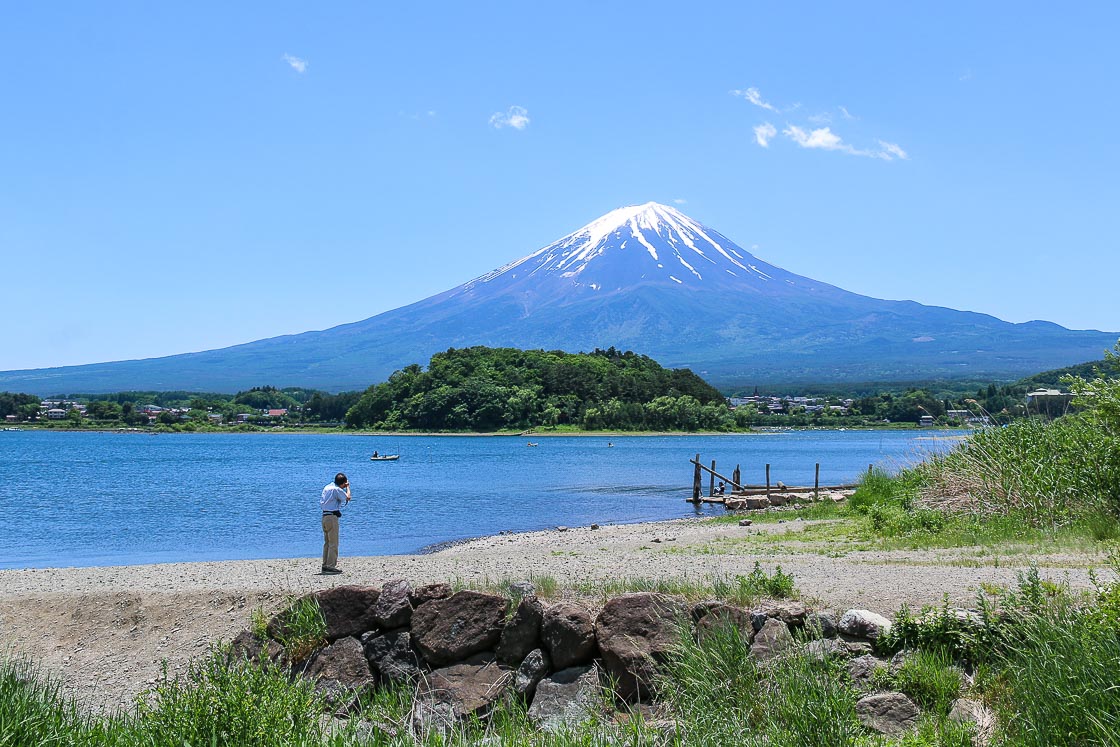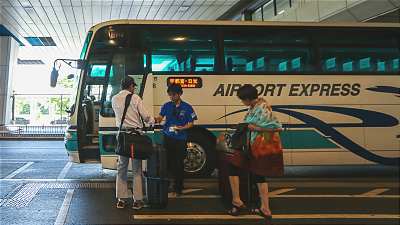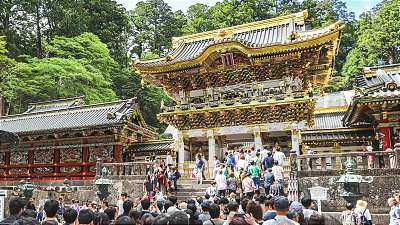Seeing Mount Fuji, an iconic symbol of Japan, is probably on the to-see list of many visitors who come to the country. Indeed, the 3776 meter tall mountain is Japan's highest and is a sight to behold regardless of season. The number of people who scale its peak during the official climbing season averages over 250,000 each year. In 2013, Mount Fuji was designated a UNESCO World Cultural Heritage Site.
Buses from Narita Airport provide access to the Fuji Five Lakes region at the northern base of Mount Fuji. There are two buses a day, arriving in the mid afternoon and in the early evening. The bus from the airport stops at Fuji-Q Highland, a popular amusement park that has Mount Fuji as a backdrop, and Kawaguchiko Station, the entrance to the resort town around Lake Kawaguchiko, one of the region's five lakes. Both places offer views of the mountain when the weather is clear, and seasonal flora like cherry blossoms and autumn colors draw even more visitors to Lake Kawaguchiko.


Buses from Kawaguchiko Station also make the journey up to the fifth station of Mount Fuji. Visitors who want to get even closer to the iconic mountain or those who want to scale it during the climbing season would find it convenient to stop at Kawaguchiko Station and transfer buses there.

After a long flight to a foreign land, not having to worry about navigating train lines and connections to your next destination is always preferred. Taking the bus allows you to sit back, relax and enjoy the scenery. Free WIFI is available onboard the bus as well as USB charging outlets, which is pretty handy especially after hours of being offline.
The bus between Narita Airport and Kawaguchiko Station stops at Dangozaka Service Area, a rest stop along the expressway, where passengers can stretch their legs, sample local delicacies at the food court and shop for regional souvenirs. Pro tip: sit on the right if you want to see Tokyo Skytree and Tokyo Tower, or on the left to see Mount Fuji which comes up after the service area. Note that there may not be much of a view if you take the later bus in the winter as it gets dark earlier.




An overnight stay in the Fuji Five Lakes region is recommended to get the best out of your trip, considering the first bus arrives at Kawaguchiko Station in the mid afternoon and the second bus in the early evening. There is a concierge desk inside Kawaguchiko Station that can provide travelers with various information like transport around the area as well as large luggage storage. Lake Kawaguchiko can also be explored by rental cycles that are available from shops near the station. The main attractions are not far from the station and are easily reached by bicycle.
Of interest are the retro bus passes that provide access around Lake Kawaguchiko and the nearby Lake Saiko, as well as the Mt. Fuji Pass, a one to three-day pass, that allows the ticket holder entry to a number of sights as well as boat cruises, and unlimited rides on the Fujikyu Railway Line between Otsuki and Kawaguchiko and the local Fujikyu buses.



Some of the spots that are worth visiting and accessible by the red retro bus line include the Itchiku Kubota Art Museum, Oishi Park and the Kachi Kachi Ropeway. Of course, a trip to the Fuji Five Lakes region is not complete without sampling the local dish, hoto noodles, which is a hotpot dish consisting of thick flat noodles and vegetables in a hearty miso broth.







As mentioned earlier, seasonal flora like cherry blossoms and autumn colors draw large crowds to the area. A momiji kairo (maple corridor) connects the Itchiku Kubota Art Museum to the cherry tree-lined promenade along the northern shores of the lake. Visitors can look forward to seeing spectacular autumn colors there as well as cherry blossoms (sakura) when they are in bloom. Festival and craft shops line the main street during the both the sakura and autumn color season, making for a lively atmosphere.



If you stay the night, you can also visit the Chureito Pagoda, a 10-minute walk from Shimo Yoshida Station on the Fujikyu Railway Line, as well as visiting the neighboring Lake Saiko (accessible by the green retro bus line) the following day.
As mentioned earlier, an overnight night stay is highly recommended to fully enjoy the area. But for those who prefer not to stay the night, there are buses bound for Shinjuku with the last one leaving Kawaguchiko Station around 20:00. Catching the last bus also means that you will not be able to see much of area beyond the vicinity of Kawaguchiko Station.
Alternatively, if this is your last leg of your trip and you are heading back to the airport, there are two buses back to Narita Airport that provide a hassle-free end to your holiday. The first departure from Kawaguchiko Station arrives back at Narita Airport at around 7:30 in the morning, making check-in possible for most of the morning international departures.






